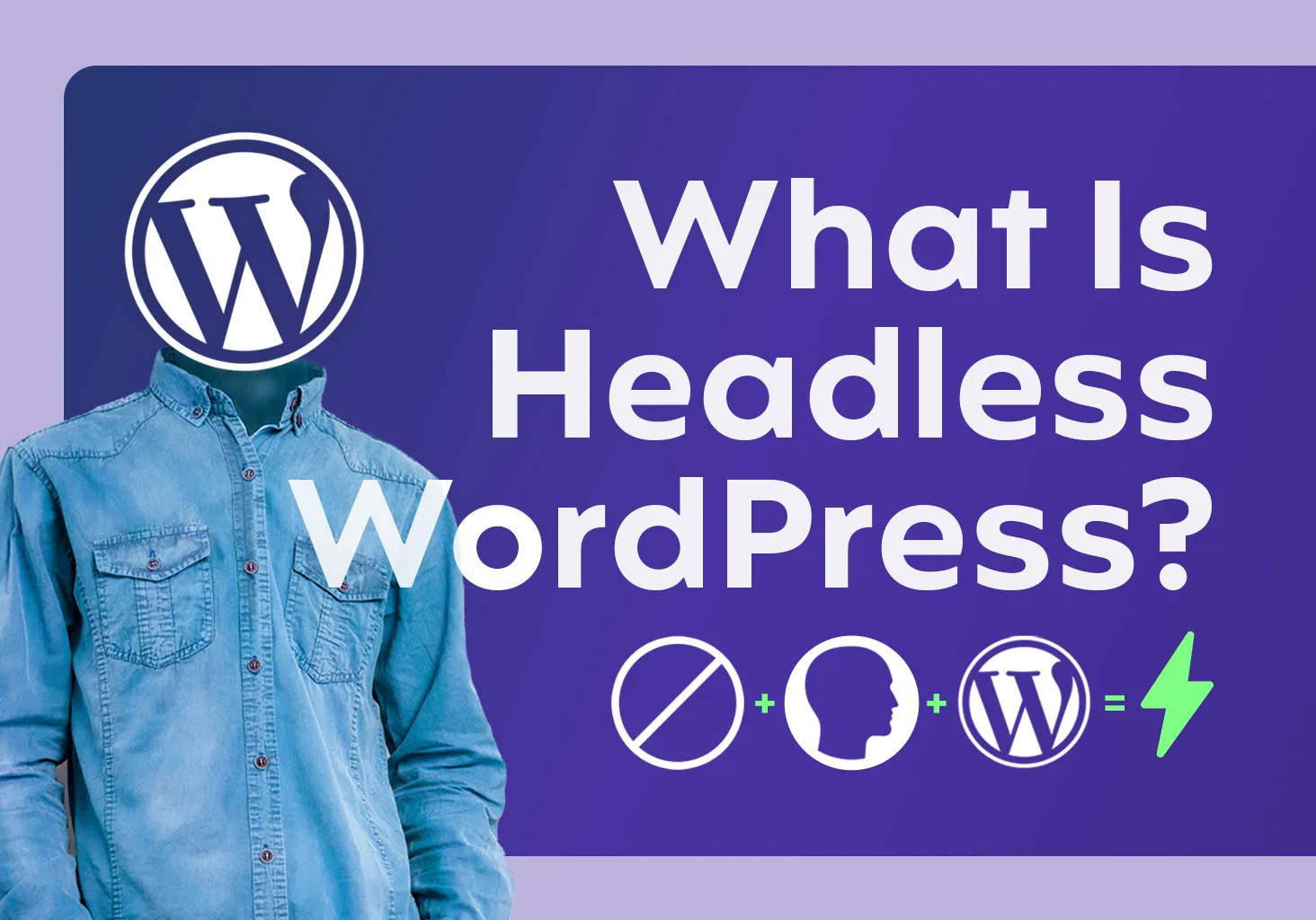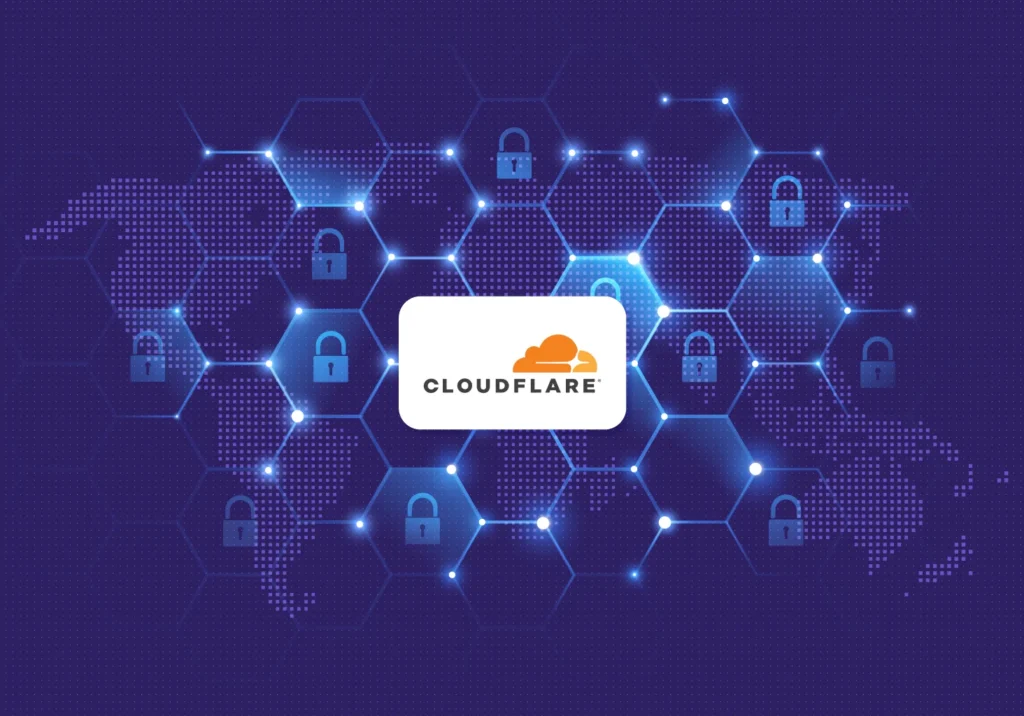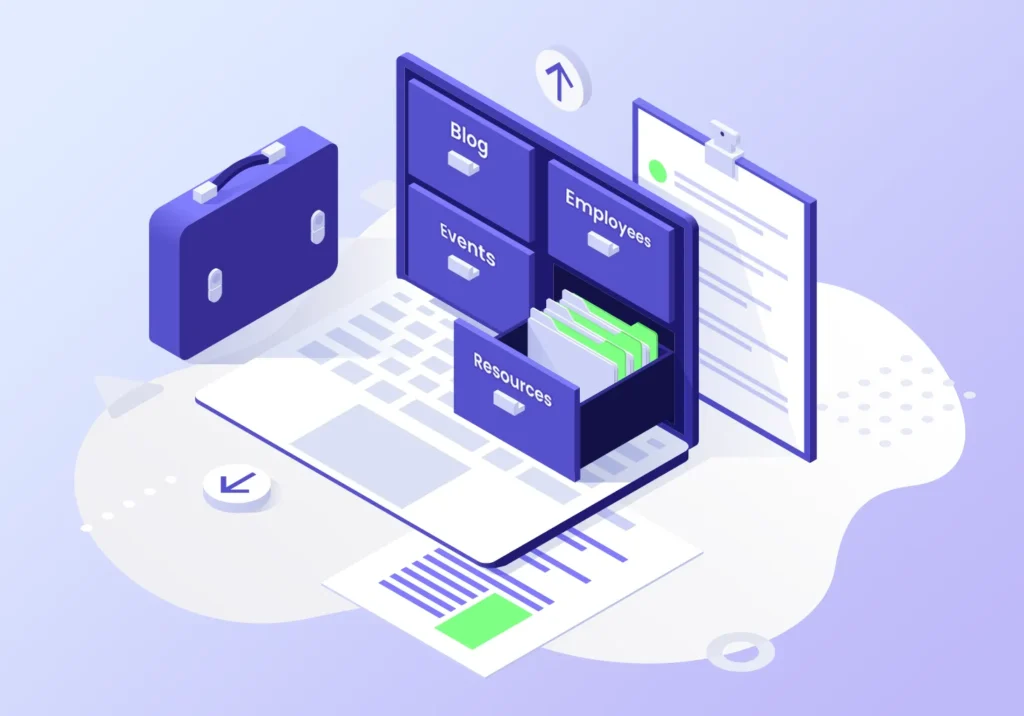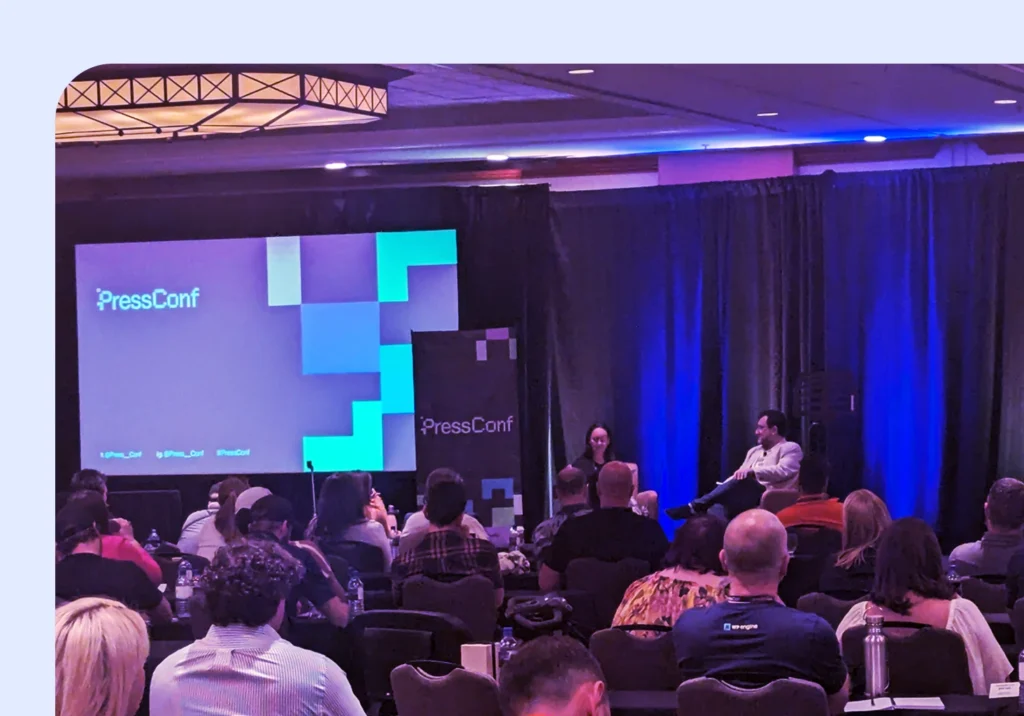WordPress has evolved significantly since I started using it in 2005. Back then, it was just a blogging platform. There were no “Pages” or “Menus,” so we had to hack it just to display a list of pages. Today, it powers over 40% of the web with features I can barely keep up with.
For large organizations like government agencies, corporations, and educational institutions, WordPress presents a common dilemma. Most content teams love the intuitive WordPress interface, but IT worries about performance under high traffic. Often, no one feels fully satisfied.
Last year, the Georgia Department of Education came to us with this exact dilemma. They had to maintain thousands of pages of content with dozens of content editors while seeking much faster page loads across the board. The solution?
A custom headless website architecture.
Best of Both Worlds: What is Headless WordPress?
Think of a traditional website as a restaurant, where the kitchen (WordPress backend) and dining room (frontend) are directly connected. Changes in one immediately affect the other. This setup is fine for simple operations, but quickly causes issues as your website grows. Think slow service (page loads), complicated menu updates (site changes), and frustrating compromises whenever you want a unique dining experience (advanced features or custom designs).
A headless website decouples frontend/backend functions:
- The Content Repository (WordPress): This is your kitchen, where all your content—text, images, user accounts, and organizational structure—is managed. But now, it’s a central kitchen capable of preparing dishes for multiple dining rooms, not just one.
- The Presentation Layer (e.g., Next.js): This is your dining room, completely independent from the kitchen. We used Next.js, a popular React-based framework, for GaDOE’s site. Next.js prioritizes speed and user experience by preloading content, ensuring your visitors never wait for their “meals” to arrive. But you aren’t limited to Next.js or React. Vue, Angular, or other frontend frameworks are also options.
Separating these functions means your content editors continue using the familiar WordPress interface, while your developers get complete freedom to build high-performing, customized experiences. This lets your restaurant (website) deliver fast service, keep menus easy to update, and offer unique dining experiences without compromise.
Our team chose WordPress for GaDOE based on their specific needs, but the headless approach is platform-agnostic. It works just as effectively with Drupal, Contentful, Strapi, or dozens of other content management systems. The key part is having developers who understand both your business requirements and how to implement custom headless solutions.
How Headless Websites Actually Work
Building a headless website calls for working across various platforms and programming languages. While they are complex builds, the inner workings are surprisingly straightforward:
- Your content creators write and manage content in WordPress (or another CMS) just like they normally would.
- This content gets stored in a database (think of it like a digital library of your website’s information).
- When a visitor comes to your website or hovers over specific content, their browser sends a request to “pre-load” specific content.
- The magic happens through an API that calls this content (we used GraphSQL for GaDOE) – these act as messengers between WordPress and the frontend.
- Next.js fetches and delivers this pre-loaded content to the visitor’s device in a lightning-fast way.
In my short video below, I explain how content pre-loading makes headless WordPress so effective. On GaDOE’s site, when you hover over a link, the system immediately fetches a JSON file containing all page content before you even click.
Using REST API or GraphQL is how the frontend (your dining room) requests exactly the content it needs in a single query and a specific structure from the backend (the kitchen). Rather than making multiple API calls for different content, it’s done all at once most of the time. That’s why browsing feels instantaneous – the content is already there when you need it.
Why Should You Care? The Technical Benefits
No white flash, no loading spinner, just instant content at the ready. I’m a big fan of speed, but that’s just the beginning. Headless websites bring several other big advantages, especially for larger organizations:
- Better Security – Separating your content repository from the public-facing site adds an extra layer of defense. Attackers can’t target WordPress directly since it’s not publicly exposed.
- Easier Scaling – Many sites struggle during traffic spikes because content management and frontend share resources. Headless sites separate these layers, making it easier to scale the frontend without slowing down your content management system.
- Developer Freedom – Frontend developers aren’t bound to WordPress templating. They can use React, Vue, Angular, or any modern tool.
- Painless Redesigns – Want a new look? With headless, frontend redesigns can happen independently, without migrating or modifying content.
- SEO Benefits – Faster sites positively impact Google’s performance metrics (Core Web Vitals), helping boost your SEO rankings.
- No Retraining Required – Your content team continues to use WordPress normally without learning a new system.
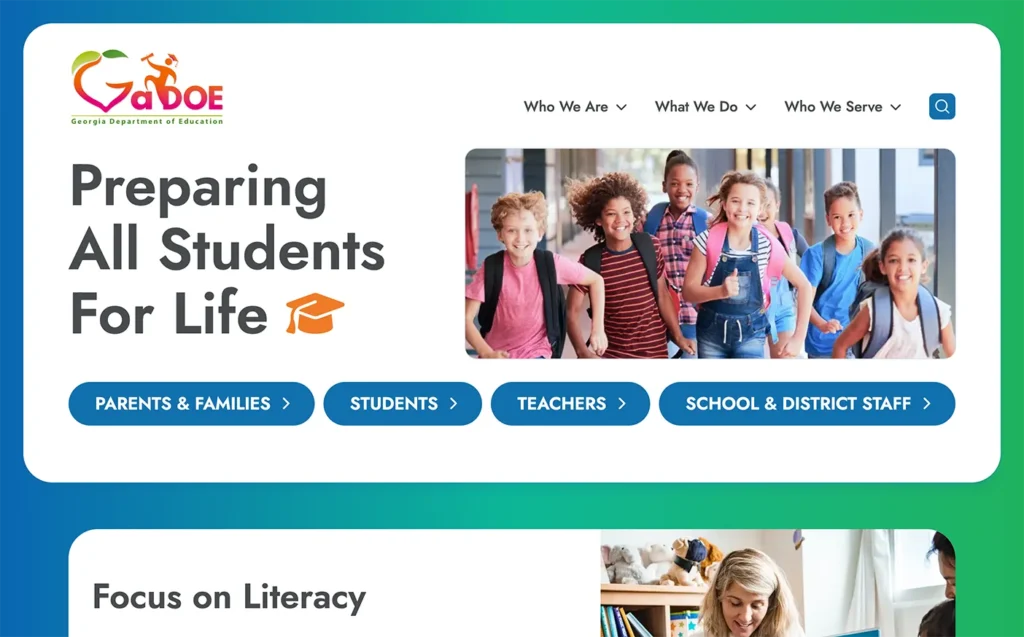
The Georgia Department of Education Goes Headless
We launched our first major headless WordPress website for the Georgia Department of Education in November 2024. You can find the GaDOE case study here. There are two major benefits of switching to headless that I want to focus on for this specific client:
1. Cost-Saving Content Independence
When it’s time for GaDOE to refresh their design (which inevitably happens every few years or so), they won’t have to start from scratch. They can keep their entire content repository intact and just replace the frontend “skin” or theme with whatever technology is best at that time. We used GraphSQL this time but that may change as new tech and tools are available.
For a site with thousands of pages maintained by multiple departments, this content independence is incredibly resource-friendly. It means their sizeable content investment is protected regardless of future design trends or technology changes.
2. A Need for Speed
Slow websites are conversion killers. Users bail and Google pushes you down in rankings. With our headless solution, GaDOE turned this problem on its head. Speed matters because the longer a page takes to load, the more likely users head elsewhere. It’s also disastrous for your SEO strategy. GaDOE no longer deals with either issues – when you visit and navigate between pages, it’s all there waiting for you.
This preloading is a game-changer for user experience. Traditional WordPress sites force users to wait through a complete page reload whenever they click a link. With our headless setup, that waiting is gone. GaDOE users get their content instantly because it’s already loaded in the background.
When Does Headless WordPress Make Sense?
I’ll be straight with you – headless WordPress isn’t for everyone. It’s a complex building process and requires specialized development expertise. With that said, it’s perfect for:
- Enterprise websites that need to support thousands of users simultaneously
- Organizations with large content libraries (thousands of pages)
- Sites requiring seamless performance across diverse device types
- Projects where content needs to outlive multiple design refreshes
The tradeoff? The complexity of headless builds comes with a higher price tag. Aside from costs, most WordPress plugins don’t work out of the box with headless. Plugins are designed to modify WordPress’s built-in frontend, which no longer exists in a headless setup. For example, if you want to use an LMS (Learning Management System) plugin, you’ll need custom code that connects the plugin’s data in WordPress to your separate frontend.
Luckily, that’s right in the wheelhouse for our custom web design services.
What to Expect with Headless Websites
If you’re considering a headless WordPress approach, here’s what to expect:
- The initial development is more involved than traditional WordPress – plan for 4-5 months for larger, enterprise-grade projects. Your content team will continue using the familiar WordPress admin they already know, with no retraining required.
- You’ll need to approach plugins differently. Core WordPress functionality transfers seamlessly, but specialized plugins affecting the frontend will need custom implementations.
- The payoff? Your headless site will age more gracefully than most WordPress sites. We expect headless sites for enterprise clients to last 5-7 years before needing significant changes, compared to the typical 2-3 year lifecycle of traditional WordPress sites.
It’s an investment in your digital future. For our headless builds, we put in more effort up front for significantly more flexibility, performance, and longevity down the road.
See For Yourself
I encourage you to visit GaDOE’s website and experience the speed yourself. Click through several pages and notice how it feels almost like you’re using a mobile app rather than browsing a traditional website.
For any organization making significant investments in their digital presence, a headless website using WordPress deserves serious consideration. It offers the best of both worlds: WordPress’s familiar content management combined with the performance of modern frontend technologies.
Have you faced similar challenges with your enterprise website?
I’d love to hear your thoughts!

